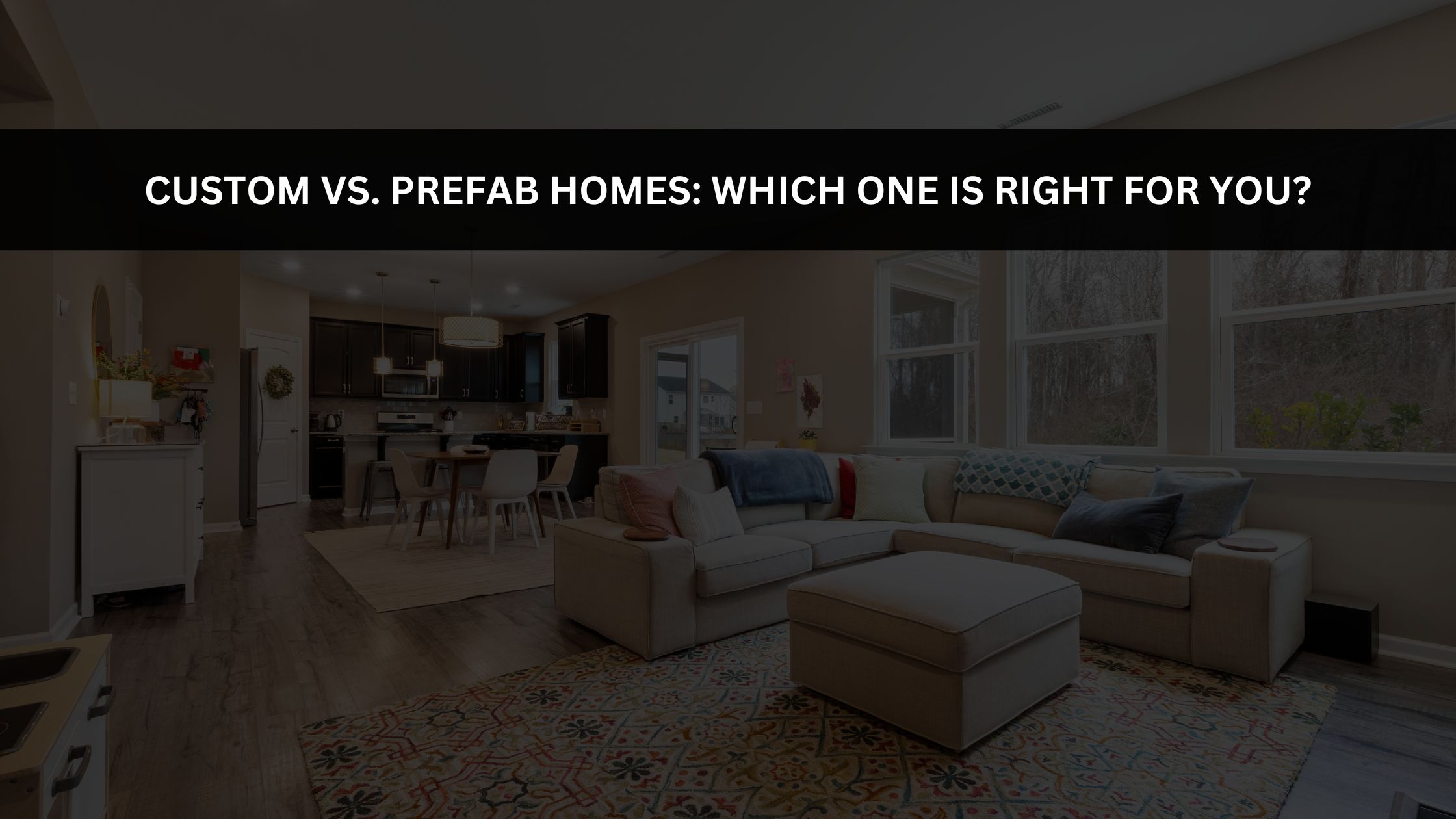
Choosing between a custom-built and prefabricated (prefab) home is one of the most important choices homeowners must make when preparing to build a new home. Depending on variables including money, schedule, design preferences, and long-term objectives, each solution has unique benefits.
Custom homes provide homeowners total control over the layout, materials, and design, enabling them to create a space that perfectly captures their vision. Prefab homes, on the other hand, are constructed in regulated factory environments, which shortens construction times and frequently lowers costs. Making an informed choice requires knowing the advantages and disadvantages of each strategy.
The intricacies of home construction can be navigated with the assistance of a Varanasi architect, who can guarantee that the selected design complies with local building codes, site constraints, and personal preferences.
Custom Homes: Personalized to Perfection
A custom home is created from the ground up based on the unique needs of the homeowner. In terms of architecture, materials, finishing, and arrangement, this method offers countless options. A custom-built home allows one to realize their aspirations of a sleek, contemporary home with expansive glass facades or a traditional Indian-style bungalow with elaborate carvings.
The flexibility to optimize the design for the site is one of the main benefits of bespoke homes. It is possible to take into account elements like climate, topography, and cultural influences to make sure the house is both aesthetically pleasing and useful. For example, a Varanasi architect might use traditional courtyard designs that provide natural cooling and ventilation, which is very useful in India’s hot environment.
But there are drawbacks to the flexibility of personalization. Custom homes are more expensive, take longer to build, and require more planning. From the foundation to the finishing touches, every element of the design needs to be carefully chosen and sourced, which may result in unanticipated delays and cost overruns.
Prefab Homes: Efficiency and Affordability
Prefab homes, sometimes referred to as factory-built or modular homes, are created in parts at a facility off-site and then delivered to the final assembly location. By streamlining the building process, this approach minimizes weather-related delays and drastically cuts down on construction time.
Cost effectiveness is one of the main advantages of prefabricated dwellings. Waste and labor costs are decreased because building takes place in a controlled setting and resources are bought in bulk. Furthermore, prefabricated homes are frequently constructed with energy-efficient materials, which makes them a sustainable choice for people who care about the environment.
Additionally, prefabricated dwellings offer a degree of quality constancy. Factory-built homes adhere to stringent quality control requirements, in contrast to traditional construction, which may have variances in workmanship. Durability and adherence to safety rules are thus guaranteed.
Prefab dwellings have drawbacks in spite of these benefits. Even though contemporary prefab designs allow for some customization, custom-built homes provide a greater degree of customization. Certain architectural styles would not be possible, and structural alterations might be limited. Furthermore, because prefab components must be supplied and installed safely, site preparation and transportation logistics must be carefully planned.
Factors to Consider When Choosing Between Custom and Prefab Homes
A number of considerations should be made while choosing between a custom and prefabricated home, including financial limits, schedule, design preferences, and site limitations.
When making decisions, the budget is frequently a deciding factor. Because custom homes require specialized work, unique materials, and specific design, they usually have greater upfront expenses. Prefab homes, on the other hand, have a more predictable pricing structure, which makes them a desirable choice for people who want to cut costs without sacrificing quality.
The completion schedule is also very important. Depending on the intricacy of the design and the materials available, building a custom home might take months or even years. Conversely, prefabricated homes are perfect for people who require a dwelling solution more quickly because they can be put together in a few weeks.
Flexibility in design is still another crucial factor. A custom-built home is the ideal option for homeowners who have a particular architectural vision or who need unique features like a home office, meditation area, or sustainable energy systems. However, a prefab home offers a dependable substitute for individuals that value effectiveness and a simple construction approach.
Based on variables including site location, temperature, and personal tastes, an architect in Varanasi may assist in determining each client’s demands and suggesting the best course of action. Homeowners can make an informed choice that fits with their long-term objectives by carefully weighing the advantages and disadvantages of each alternative.
Blending Custom and Prefab Elements for a Hybrid Approach
A hybrid method to home building, which combines the finest features of prefab and custom homes, has become more and more popular in recent years. This technique allows for custom design revisions while prefabricating some structural elements, including walls or roof sections.
In places where traditional construction methods are costly or time-consuming, a hybrid approach can be especially helpful. Homeowners can cut expenses and building time while still getting the degree of customization they want by using prefab components.
For instance, when creating a unique floor plan that takes into account regional architectural customs, an architect in Varanasi can suggest prefabricated walls or modular kitchen items. Many homeowners find it to be an enticing option because of this balance, which guarantees both efficiency and customization.
A Home That Suits Your Lifestyle
Selecting a solution that fits one’s lifestyle requirements, financial constraints, and long-term goals is crucial, whether one chooses a prefabricated building or a completely constructed home. Unmatched design freedom is provided by custom houses, enabling homeowners to create a space that expresses their individuality and tastes. Conversely, prefabricated dwellings offer affordability, efficiency, and quicker completion timeframes.
By offering professional insights into design options, construction methods, and material selections, working with an experienced architect in Varanasi can facilitate the decision-making process. Homeowners can design a living area that is not only aesthetically pleasing but also sustainable and useful with the correct planning and direction.